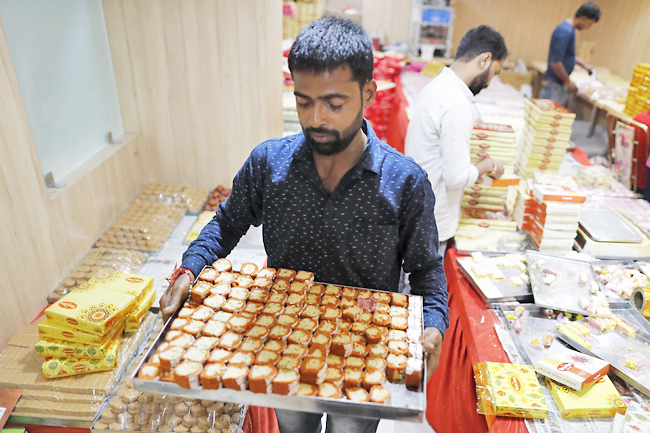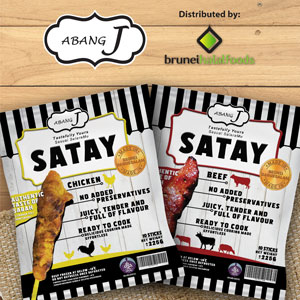AP – Many preparations go into the celebration of Deepavali, which started on Monday.
There’s cleaning and decorating the house, buying new clothes, visiting friends and family – and of course preparing and sharing food.
And although the food associated with Deepavali vary from culture to culture, one central theme is snacks and sweets.
Roni Mazumdar is the founder and CEO of Unapologetic Foods, a restaurant group that includes Dhamaka and Semma in New York City. He moved to the United States from Kolkata when he was 12 and misses the Deepavali celebrations of his youth.
“In India, every single relative would be there, and that’s what made it Deepavali to me,” he said.
The sweet that encapsulates the delight of the holiday for him is fresh rasgulla, a Bengali sweet with jaggery, a type of brown cane sugar.
“Imagine these little cheese dumplings that are dipped in a sweet jaggery syrup that you can just pop into your mouth all day long. It’s like a divine intervention of mankind,” he said.

The rasgulla he most associates with Deepavali are made from nolen gur, a jaggery syrup made from the sap of date palms, which is harvested as Deepavali approaches, when the weather gets cooler.
Milk is also a big part of the sweets from Kolkata and eastern India, he said. He loves kacha gulla, made from milk that has been curdled and has a loose texture “like ricotta cheese”. It’s used in many kinds of sweets.
Raghavan Iyer, a cookbook author and James Beard Award winner, has fond memories of Deepavali celebrations in Mumbai, where he lived until age 21.”The food itself is important, but it’s also about the exchange of food with relatives and friends – that is the fun part of it,” he said.
“Growing up, we always knew which neighbours to go to – the houses where the goodies would be really great.” He remembers fondly a steamed-rice, flour-based dumpling called kozhukattai. His family made two versions: a sweet one made with fresh coconut and jaggery, and a savoury one filled with lentils and chilies.
Iyer said Deepavali always featured kaaju barfi, bars made from pureed cashews, ghee (clarified butter) and sugar. And many desserts, he said, are finished by soaking them in a sweet syrup.
One of his favourites is jalebi, which features chickpea flour. It’s dipped in sugar syrup laced with cardamom, saffron and lime.
Leela Mahase from Queens, New York, grew up in a Hindu family in Trinidad. Her Deepavali sweets include ladoos, which she makes with a paste made from ground split peas and turmeric.
It is fried in oil, then ground again, and combined with a syrup made from brown sugar, various spices and condensed milk. It’s formed into balls for eating.
Mahase also makes prasad, made by toasting flour in ghee, then adding cream of wheat. In a separate pot, she simmers evaporated milk with water, raisins, cinnamon and cardamom.
This milk-based syrup is added to the cream of wheat mixture, and cooked until the liquid has evaporated. It has a texture she compares to mashed potatoes, and is eaten with the fingers.
Lawyer and mother of three in New York City Maneesha Sharma celebrates Deepavali along the traditions of northern India, where her family is from.
“Deepavali is celebrated with grandeur. You decorate the front door with lights, you put out your finery, and you eat delicacies you would not eat on a daily basis.”






